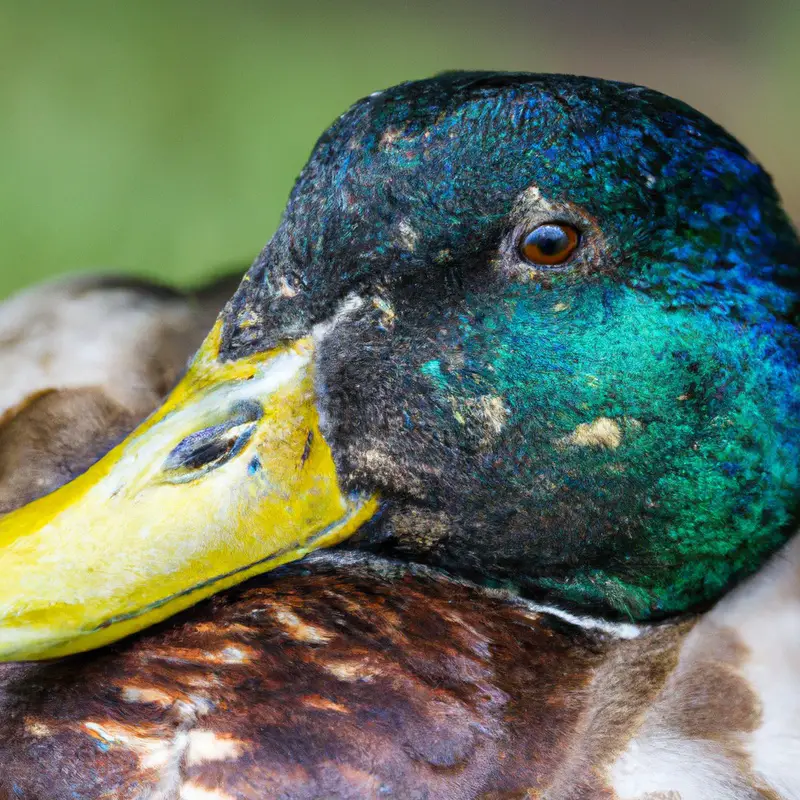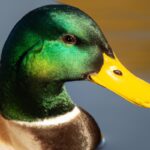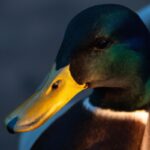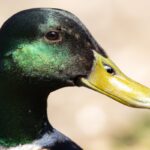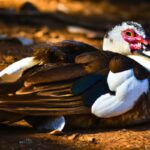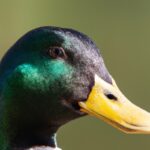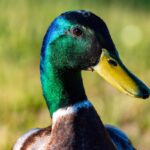Key Takeaways:
- Mallard hunting in Alabama is a popular and well-regulated activity.
- Alabama offers diverse habitats for mallard hunting, including marshes, swamps, and rivers.
- Hunting season for mallards in Alabama typically begins in late November and lasts through early January.
- Alabama requires a valid hunting license and appropriate permits for mallard hunting.
Have you ever dreamt of the thrill of hunting mallard ducks in the picturesque lands of Alabama?
Well, get your gear ready because it’s time to turn that dream into a reality! As an experienced hunter, I can tell you that Alabama offers some of the finest hunting opportunities for mallards.
In this comprehensive guide, I will take you through everything you need to know to make your hunting trip a success.
From the necessary licenses and permits to the best hunting spots, equipment and gear, techniques, and safety tips – we’ve got you covered.
So, let’s dive in and get ready to conquer the marshes and fields in pursuit of that prized mallard!
Mallard Hunting in Alabama | |
Pros | Cons |
Abundance of Mallards | Strict bag limits |
Diverse hunting locations | Weather fluctuations affecting migration patterns |
Experienced hunting guides available | Competitive hunting pressure |
Accessible public hunting lands | Potential hunting restrictions |
Opportunity for trophy birds | Limited hunting season |
Hunting Regulations in Alabama
Licenses and permits required for hunting mallard in Alabama
To hunt mallard in Alabama, you will need a valid hunting license and a Federal Migratory Bird Hunting and Conservation Stamp (also known as a Duck Stamp). The hunting license can be purchased online or in person from the Alabama Department of Conservation and Natural Resources.
The Duck Stamp can be purchased from the United States Postal Service or from certain retailers.
Remember to have your licenses and permits with you while hunting, as they may be requested by law enforcement. Happy hunting!
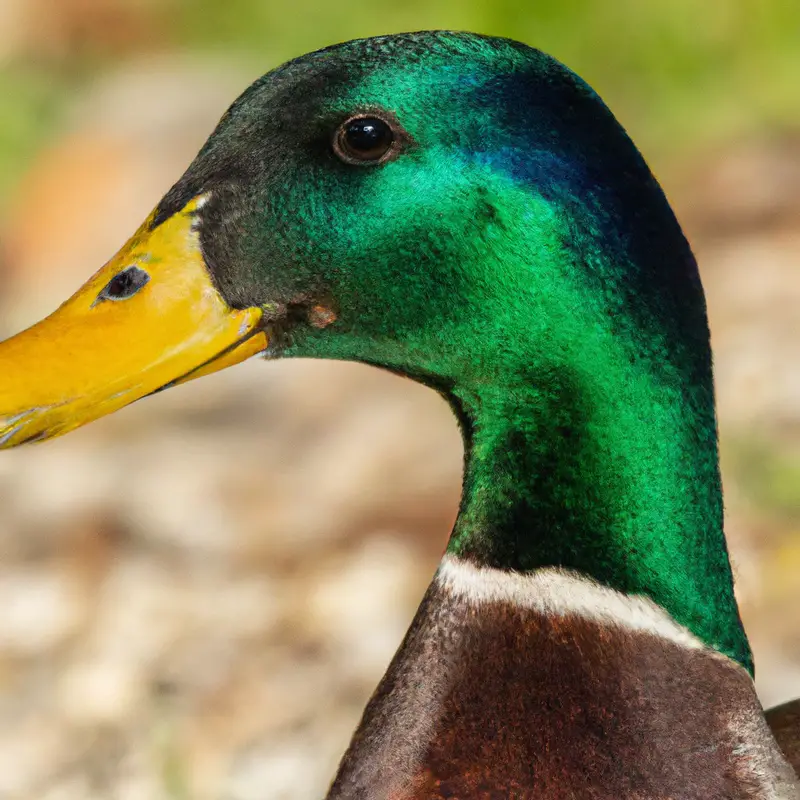
Season dates and bag limits for mallard hunting
For mallard hunting in Alabama, the season dates and bag limits are determined by the Alabama Department of Conservation and Natural Resources.
Typically, the season runs from late November until the end of January.
The bag limit for mallards is three per day, which includes no more than one hen.
It’s important to stay up to date with any changes in the hunting regulations as they can vary from year to year.
Always check with the Alabama Department of Conservation and Natural Resources for the most current information on season dates and bag limits.
Happy hunting!
Restrictions and guidelines for hunting mallard in Alabama
When hunting mallard in Alabama, it’s important to be aware of the restrictions and guidelines in place.
Here are some key points to keep in mind:
- Season Dates: Mallard hunting season in Alabama typically runs from November to January. Be sure to check the specific dates each year as they may vary.
- Bag Limits: Alabama has set bag limits for mallard hunting. As of the time of writing, the daily bag limit for mallards is 6, including no more than 4 hens.
- Licensing Requirements: To hunt mallard in Alabama, you’ll need a valid Alabama hunting license, as well as a Federal Duck Stamp. Make sure you have these documents with you while hunting.
- Hunting Hours: Mallard hunting is restricted to specific hours of the day. In Alabama, shooting hours for waterfowl start 30 minutes before sunrise and end at sunset.
- Hunting Methods: When hunting mallard, be aware that Alabama regulations prohibit the use of certain hunting methods, such as baiting or using live decoys. Ensure you are using legal methods for a fair and ethical hunt.
Remember to always consult the latest hunting regulations in Alabama and follow any additional restrictions or guidelines that may be in effect.
This will help ensure a safe and compliant hunting experience.
Best Locations for Mallard Hunting in Alabama
Description of top hunting areas in Alabama for mallards
I’m happy to share with you the top hunting areas in Alabama for mallards.
These locations are known for their abundant waterfowl populations and offer excellent opportunities for mallard hunting.
- Wheeler National Wildlife Refuge: Situated along the Tennessee River, Wheeler National Wildlife Refuge is a prime spot for mallard hunting. With over 35,000 acres of wetlands and fields, it attracts large numbers of mallards during the winter season.
- Mobile-Tensaw Delta: The vast Mobile-Tensaw Delta provides a diverse habitat for mallards. Its marshes, creeks, and flooded timber are ideal for waterfowl hunting. The higher water levels in the winter attract a significant number of mallards.
- Eufaula National Wildlife Refuge: Located in southeast Alabama, Eufaula National Wildlife Refuge offers a mix of flooded fields, swamps, and open water. Mallards find refuge here during the colder months, making it a promising location for hunting.
- Weiss Lake: Known for its trophy-sized waterfowl, Weiss Lake is a popular destination for mallard hunting. The lake’s backwaters and flooded timber provide excellent opportunities to target these ducks.
- Wheeler Lake: Another attractive spot for mallard hunting, Wheeler Lake has ample shallow flats and coves where mallards gather in large numbers. The lake’s extensive shoreline and open water make it an exciting location to explore.
These top hunting areas in Alabama for mallards offer diverse habitats and abundant opportunities for waterfowl enthusiasts.
Whether you prefer hunting in wetlands, rivers, or lakes, Alabama has a variety of locations to satisfy your mallard hunting needs.
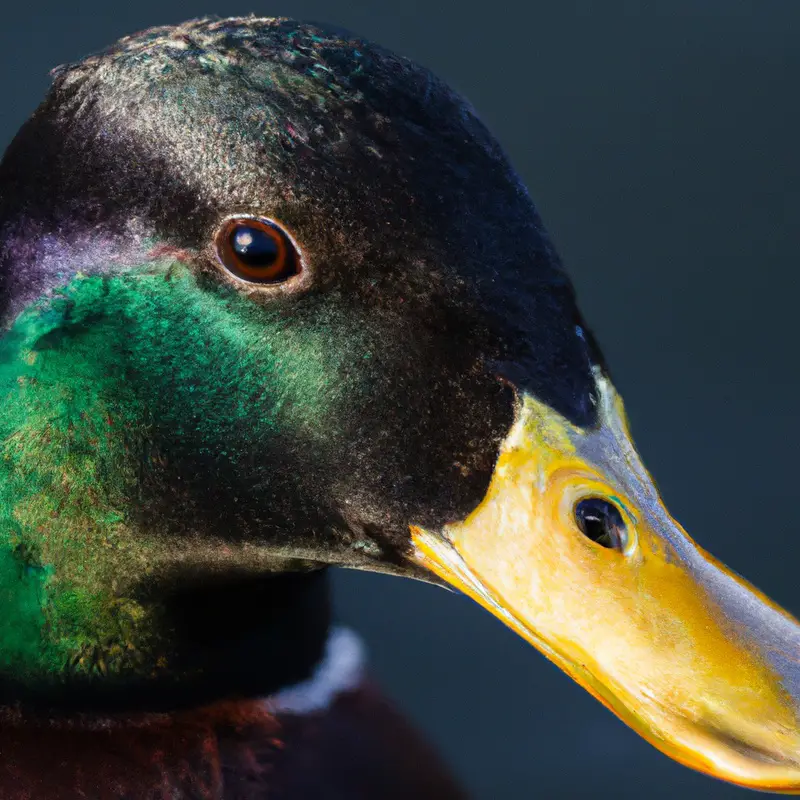
Factors to consider when choosing a hunting location
When choosing a hunting location, there are a few factors you should consider. The first is the type of game you want to hunt.
Different locations attract different species, so do your research.
Next, think about the accessibility and proximity to your home or lodging. Being close to your base makes logistics easier.
Additionally, terrain and habitat should match your hunting style and preferences.
Lastly, consider the availability of necessary resources like food, water, and shelter for both you and your prey. Keep these factors in mind, and you’ll be well on your way to finding the perfect hunting location.
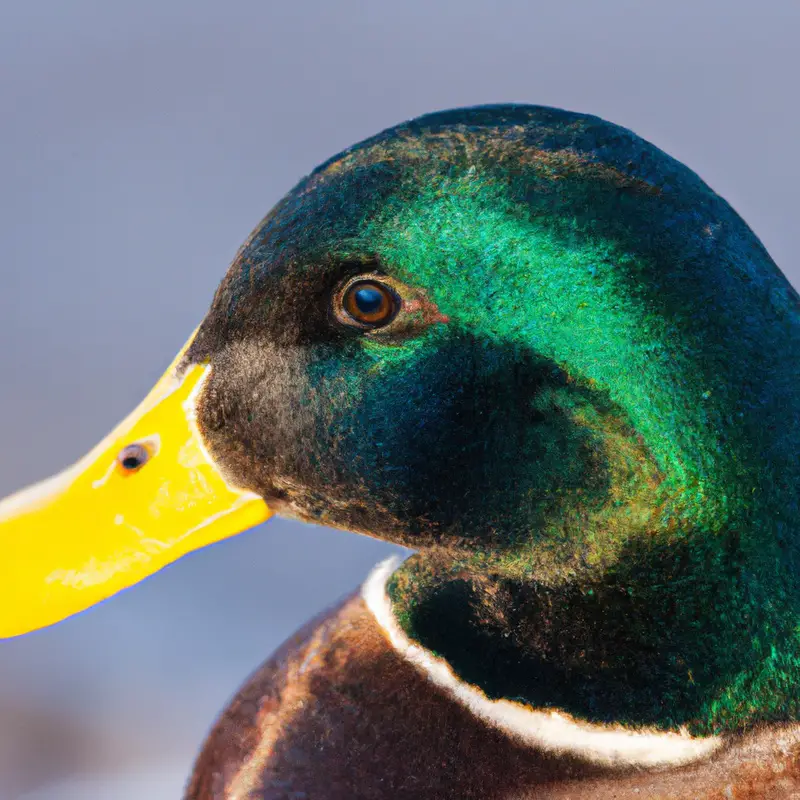
Tips for scouting and finding productive hunting spots
To find productive hunting spots for mallards in Alabama, start by researching local hunting reports and forums online.
These can provide valuable insights about areas with high duck populations.
Additionally, consider reaching out to local hunters or hunting clubs for recommendations and firsthand knowledge.
Next, scout potential spots beforehand to assess their suitability.
Look for areas with ample food sources, such as agricultural fields or flooded timber.
Pay attention to duck behavior and signs of activity, such as feeding or roosting areas.
Finally, be flexible and adaptable, as conditions and bird patterns can change throughout the season.
Happy hunting!
Equipment and Gear for Mallard Hunting
Essential firearms and ammunition for mallard hunting
When it comes to mallard hunting, having the right firearms and ammunition is essential.
You’ll want to choose a shotgun that can handle heavy loads and has a relatively tight choke to maximize your range and accuracy.
Popular choices include 12-gauge or 20-gauge shotguns.
As for ammunition, go for high-quality, non-toxic steel shot in sizes ranging from 2 to 4.
It’s important to use non-toxic shot to comply with regulations and protect the environment.
Remember to check your state’s hunting regulations for any specific requirements or restrictions.
Recommended camouflage clothing and accessories
For successful mallard hunting, it’s important to have the right camouflage clothing and accessories.
Here are some recommendations:
- Camouflage clothing: Choose a pattern that matches the environment you’ll be hunting in, such as wetlands or grassy fields. Opt for waterproof and breathable materials to stay comfortable in various weather conditions.
- Face mask and gloves: These help conceal your face and hands, which are often the most easily noticeable parts of the body. Look for options with the same camouflage pattern as your clothing.
- Camouflage hat: A hat with a camouflage pattern not only keeps the sun out of your eyes but also helps blend in with your surroundings.
- Camouflage bag or backpack: A camo bag allows you to carry your hunting essentials while remaining inconspicuous. Look for one with multiple compartments for organized storage.
- Camouflage accessories: Consider additional accessories like a camo seat cushion, binocular harness, or ground blind cover to enhance your camouflage and increase your chances of a successful hunt.
Remember, the key is to blend in seamlessly with your environment, so invest in quality camouflage gear that matches your hunting location.
Decoys, calls, and other helpful hunting tools
Decoys, calls, and other helpful hunting tools are essential for a successful mallard hunting trip in Alabama.
Decoys help to attract ducks by mimicking their appearance, while calls simulate their natural sounds.
Investing in quality decoys and calls is key for luring mallards towards your hunting area.
Additionally, there are other useful tools that can enhance your hunting experience.
Binoculars help you scout for ducks in the distance, while waders keep you dry when wading in water.
A reliable duck hunting backpack allows you to carry your gear comfortably, and a trusty shotgun ensures you’re equipped to take the shot when the time comes.
Remember to check your state’s regulations for hunting tools, as certain restrictions may apply.
Overall, having the right decoys, calls, and additional equipment can greatly improve your chances of a successful mallard hunting adventure in Alabama.
Hunting Techniques for Mallards
Decoy placement strategies for attracting mallards
When setting up your decoys for attracting mallards, there are a few strategies you can consider. Firstly, placing your decoys in a natural-looking pattern, mimicking how mallards gather in the wild.
Secondly, creating a landing zone near the water’s edge with fewer decoys to entice mallards to fly in.
Thirdly, using motion decoys such as spinning wing decoys or splashing devices to add realism and attract attention. Remember to adjust your decoy spread based on wind direction and consider using different types of decoys to add variety.
Effective calling techniques for mallards
When it comes to hunting mallards, effective calling techniques play a crucial role in luring these elusive birds within shooting range.
Here are a few tried and tested calling techniques that can help you improve your success in bagging mallards:
- Start with soft quacks: Mimicking the soft and subtle quacks of a female mallard can grab the attention of nearby ducks without spooking them. Use your calls to produce gentle quacks, ensuring you don’t overdo it.
- Mix in feeding calls: Incorporating feeding calls into your sequence can create a sense of comfort and security among the ducks. These calls imitate the sounds of mallards feeding on the water and can entice them to join in.
- Use comeback calls: When ducks are flying away or seem disinterested, using comeback calls can trigger curiosity and make them turn back towards your location. A series of quick and loud quacks followed by a few soft ones can do the trick.
- Employ greeting calls: Greeting calls mimic the sounds that mallards make when they first arrive at a new location or join a flock. By using these calls, you can create the impression that your hunting spot is a safe and attractive place for the ducks to join.
Remember, mastering these calling techniques takes practice and observation.
Pay attention to the ducks’ responses and adjust your calling accordingly.
Happy hunting!
Concealment and blind setups for mallard hunting
When hunting mallards, concealment and blind setups are essential for success.
You need to blend in with your surroundings to fool these wary ducks.
Choose a blind that matches the habitat you’re hunting in, such as a pit blind for field hunting or a layout blind for marshes or shorelines.
Camouflage your blind with natural vegetation, like grass or branches, to create a realistic blend.
Make sure your blind offers enough space for you and your gear, provides good visibility, and is comfortable for long hours of waiting.
A well-concealed blind will increase your chances of getting close to those elusive mallards.
Safety Tips for Mallard Hunting
Importance of firearm safety in hunting
Firearm safety is of utmost importance when hunting. It’s crucial to prioritize the safety of yourself and those around you.
Always treat every firearm as if it is loaded, even if you believe it to be unloaded.
Keep your finger off the trigger until you are ready to shoot, and always point the barrel in a safe direction. Additionally, be familiar with your firearm and know its capabilities.
Proper firearm handling and safety measures can prevent accidents and ensure a successful and enjoyable hunting experience.
Proper handling and storage of ammunition
To ensure your safety and the safety of others, proper handling and storage of ammunition is essential when you’re out hunting.
Here are some important tips to keep in mind:
- Handle ammunition with care: Always treat ammunition as if it’s loaded. Avoid dropping or mishandling it, as this can cause accidents.
- Store ammunition securely: Keep your ammunition in a locked container or safe, away from children and unauthorized individuals. This prevents accidents and unauthorized use.
- Follow manufacturer recommendations: Different types of ammunition may require specific storage conditions, such as temperature and humidity levels. Always follow the manufacturer’s instructions for safe storage.
- Inspect ammunition regularly: Before use, inspect each round for signs of damage or corrosion. Damaged or old ammunition can be unreliable and dangerous to shoot.
- Dispose of old ammunition properly: If you have old or damaged ammunition, do not attempt to shoot it. Instead, contact your local law enforcement agency or ammunition dealer for proper disposal options.
By practicing proper handling and storage of ammunition, you can ensure a safer hunting experience for yourself and those around you.
Stay safe out there!
Hunting with a partner and communication in the field
When hunting with a partner, communication is key to ensure safety and success in the field.
A few important tips to keep in mind:
- Establish clear and concise signal systems to communicate silently or over long distances.
- Agree on a plan, including hunting locations and targets, before heading out.
- Maintain constant communication throughout the hunt, using hand signals or low-volume voice commands.
- Regularly check in with your partner to ensure they’re safe and aware of your movements.
- Practice active listening and be prepared to adapt your approach based on your partner’s feedback.
By prioritizing effective communication with your hunting partner, you can enhance safety and maximize your success in the field.
FAQs About Hunting Mallard in Alabama
Can I hunt mallard without a license in Alabama?
No, you cannot hunt mallard without a license in Alabama.
In Alabama, like in most states, a hunting license is required to hunt any species, including mallards.
It’s important to always follow the laws and regulations regarding hunting to ensure the conservation and sustainability of wildlife populations.
Make sure to obtain the necessary licenses and permits before heading out to hunt mallards or any other game species in Alabama.
Happy hunting!
Are there any specific regulations for youth hunters?
Yes, there are specific regulations for youth hunters in Alabama.
Youth hunters, who are under the age of 16, must be accompanied by a licensed adult hunter who is at least 21 years old.
The adult hunter must remain within arm’s length of the youth hunter at all times while hunting.
Additionally, the youth hunter must have completed a hunter education course and possess the necessary licenses and permits.
It’s important to review the specific regulations set by the Alabama Department of Conservation and Natural Resources to ensure compliance and a safe hunting experience.
What are the primary challenges of hunting mallard in Alabama?
Hunting mallard in Alabama can be challenging due to a few primary factors. Firstly, the weather conditions can be unpredictable, affecting the ducks’ behavior and migration patterns.
Secondly, there is competition from other hunters which can reduce the chances of successfully bagging a mallard.
Thirdly, the habitat varies, and knowing where the mallards are likely to be can be difficult. Finally, mallards are wary and alert, making it important to have the right camouflage and shot precision.
Overall, these challenges require hunters to be adaptable and well-prepared.
Final Verdict
Hunting mallard in Alabama is a thrilling and rewarding experience for outdoor enthusiasts.
By understanding and adhering to the hunting regulations, such as obtaining the necessary licenses and permits, knowing the season dates and bag limits, and following the restrictions and guidelines, hunters can ensure a safe and successful hunt.
Choosing the right hunting location, equipping oneself with the appropriate gear, and mastering effective hunting techniques, such as decoy placement and calling, also greatly contribute to a successful mallard hunt.
Additionally, prioritizing safety through proper firearm handling, ammunition storage, and hunting with a partner further enhances the hunting experience.
Overall, hunting mallard in Alabama offers endless opportunities for adventure and camaraderie in the great outdoors.
